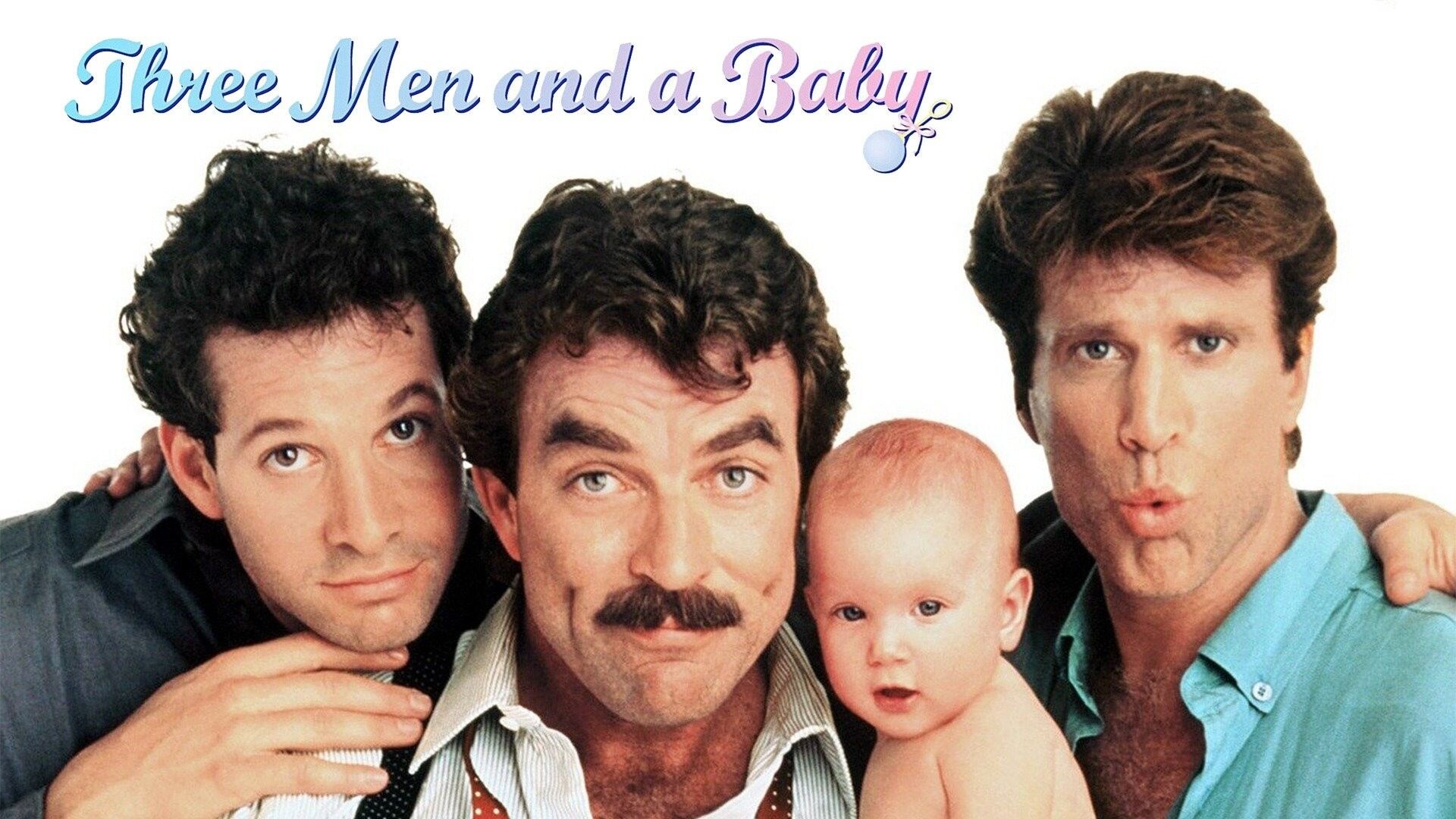
Get ready to dive into the world of one of the most beloved comedies of the 80s with “Three Men and a Baby!” This iconic film, released in 1987, captured the hearts of audiences worldwide with its hilarious and heartwarming story. Directed by Leonard Nimoy and starring Tom Selleck, Ted Danson, and Steve Guttenberg, “Three Men and a Baby” follows the lives of three bachelor roommates whose lives are turned upside down when they find a baby left on their doorstep.In this article, we will explore 33 fascinating facts about “Three Men and a Baby” that will captivate both fans and movie buffs alike. From interesting behind-the-scenes trivia to the film’s impact on pop culture, get ready to uncover some surprising details about this classic comedy. So grab some popcorn, sit back, and join us on this nostalgic journey into the world of “Three Men and a Baby!
Key Takeaways:
- Three Men and a Baby, released in 1987, became a beloved classic, showcasing the power of friendship and the joys and challenges of parenthood.
- The film’s success reshaped perceptions of male caregivers and inspired more family-oriented comedies, leaving a lasting impact on popular culture.
The movie Three Men and a Baby was released in 1987.
Three Men and a Baby is a comedy film that was directed by Leonard Nimoy and produced by Edward Teets and Ted Field. It was released on November 25, 1987, and became a box office success.
The screenplay for the movie was written by James Orr and Jim Cruickshank.
James Orr and Jim Cruickshank were responsible for the screenplay of Three Men and a Baby. Their script combined elements of comedy, drama, and family dynamics to create a heartwarming story.
The movie stars Tom Selleck, Steve Guttenberg, and Ted Danson as the three men.
The main cast of Three Men and a Baby includes Tom Selleck as Peter Mitchell, Steve Guttenberg as Michael Kellam, and Ted Danson as Jack Holden. The chemistry between the three actors is one of the highlights of the film.
The plot revolves around three bachelors who find themselves taking care of a baby girl.
Three Men and a Baby follows the lives of three successful bachelors living in a New York City apartment. Their lives are turned upside down when they discover a baby girl left on their doorstep, leading to a series of comedic and heartwarming situations.
The film is a remake of a 1985 French film titled ‘Trois hommes et un couffin.’
Three Men and a Baby is a remake of the French film ‘Trois hommes et un couffin.’ The American adaptation received widespread praise and was a commercial success, becoming one of the highest-grossing films of 1987.
The movie was primarily shot on location in Toronto, Canada.
Although the film is set in New York City, a significant portion of Three Men and a Baby was filmed in Toronto, Canada. The city provided a suitable backdrop for the story and offered financial incentives for the production.
The iconic apartment set in the movie was designed by the production designer Peter S. Larkin.
The apartment set in Three Men and a Baby was meticulously designed by the talented production designer Peter S. Larkin. The set became an iconic symbol of the film and helped establish the characters’ lifestyle.
The character of Mary, the baby, was played by twins Lisa and Michelle Blair.
The role of Mary, the adorable baby in Three Men and a Baby, was played by twins Lisa and Michelle Blair. Their adorable performances captured the hearts of the audience and added to the film’s charm.
The film was a critical and commercial success, grossing over $240 million worldwide.
Three Men and a Baby was a massive success at the box office, grossing over $240 million worldwide. It received positive reviews from critics and was praised for its comedic timing, engaging storyline, and heartfelt moments.
Leonard Nimoy directed the film, best known for his role as Spock in the Star Trek franchise.
Leonard Nimoy, who is best known for his portrayal of Spock in the Star Trek franchise, took on the directorial role for Three Men and a Baby. His experience in the industry brought a unique perspective to the film.
The film’s theme song, “Goodbye, Baby,” was performed by Peter Cetera.
The memorable theme song of Three Men and a Baby, titled “Goodbye, Baby,” was performed by Peter Cetera. The song perfectly captures the emotions of the film and adds to its overall impact.
The movie was nominated for several awards, including the People’s Choice Award for Favorite Comedy Motion Picture.
Three Men and a Baby received recognition from various award organizations. It was nominated for the People’s Choice Award for Favorite Comedy Motion Picture, solidifying its popularity among audiences.
The film explores the themes of fatherhood, responsibility, and the power of love.
Three Men and a Baby delves into the themes of fatherhood, responsibility, and the transformative power of love. The story shows the growth and development of the three men as they navigate their newfound roles as fathers.
The movie’s success led to a sequel titled Three Men and a Little Lady.
Due to the enormous success of Three Men and a Baby, a sequel titled Three Men and a Little Lady was released in The sequel continues the story of the three men as they navigate the challenges of raising a growing child.
The movie has gained a cult following over the years.
Three Men and a Baby has garnered a devoted fan base over the years since its release. The film’s charm, humor, and heartwarming moments continue to resonate with audiences, making it a beloved classic.
The film was initially intended to be a drama, but it was later changed to a comedy.
Originally planned as a drama, the filmmakers decided to transform Three Men and a Baby into a comedy. This decision proved to be a wise one, as the humor added an extra layer of entertainment to the film.
The three main actors formed a close bond while working on the film.
Tom Selleck, Steve Guttenberg, and Ted Danson developed a close friendship while filming Three Men and a Baby. Their chemistry on screen was a reflection of their genuine camaraderie off screen.
The film showcases the challenges and rewards of parenthood.
Three Men and a Baby beautifully portrays the ups and downs of parenthood. It explores the challenges faced by the three men as they learn to care for the baby and highlights the joy and fulfillment that comes with raising a child.
The apartment set was filled with baby supplies and toys to create a realistic environment.
To make the apartment set in Three Men and a Baby feel authentic, it was filled with baby supplies and toys. This attention to detail enhanced the believability of the story and added to the film’s overall realism.
The film was shot in less than three months.
Despite its success and production value, Three Men and a Baby was filmed in a relatively short period of less than three months. The efficient shooting schedule allowed the filmmakers to capture the essence of the story while staying within budget.
The success of the movie inspired several international remakes.
Three Men and a Baby’s success prompted the creation of several international remakes, including Indian, Malaysian, and Turkish versions. The original film’s universal themes resonated with audiences across different cultures.
The film was Disney’s first live-action film to surpass $100 million at the domestic box office.
Three Men and a Baby achieved a significant milestone for Disney, becoming their first live-action film to surpass $100 million at the domestic box office. This success solidified Disney’s presence in the live-action movie market.
The movie was based on the story by Coline Serreau.
Coline Serreau’s original story served as the basis for Three Men and a Baby. The American adaptation added its own unique elements while staying true to the heart of the original concept.
The film was known for its touching and heartwarming moments.
Three Men and a Baby struck a chord with audiences with its touching and heartwarming moments. The film beautifully captures the complexities of relationships and the power of love, making it an emotional journey for viewers.
The movie was one of the highest-grossing films of 1987.
In 1987, Three Men and a Baby became one of the highest-grossing films of the year. Its success paved the way for more comedies that blended humor with heartfelt storytelling.
The film’s success led to the creation of merchandise and spin-off products.
The popularity of Three Men and a Baby resulted in the release of merchandise and spin-off products. From clothing to toys, fans could bring a piece of the film into their own lives.
The movie’s success helped reshape the perception of male caregivers.
Three Men and a Baby played a significant role in reshaping the perception of male caregivers. It challenged traditional gender roles and showcased that men are just as capable of taking care of children as women.
The film received positive reviews for its lighthearted humor and relatable characters.
Three Men and a Baby was praised by critics for its lighthearted humor and relatable characters. The comedic moments were balanced with genuine emotions, creating a well-rounded and enjoyable viewing experience.
The movie serves as a reminder of the importance of family and friendship.
Three Men and a Baby serves as a reminder of the significance of family and friendship. It highlights the power of these relationships in overcoming challenges and finding happiness.
The film’s success opened doors for more opportunities for the main actors.
Following the success of Three Men and a Baby, the main actors experienced an increase in their popularity and were offered more significant roles in subsequent projects. The film helped to solidify their status as talented and versatile actors.
The movie’s title was the subject of various parodies and references in popular culture.
Three Men and a Baby’s iconic title became a subject of parodies and references in popular culture. It has been spoofed in various films, TV shows, and even commercials, showcasing its enduring impact.
The success of Three Men and a Baby paved the way for more family-oriented comedies.
Three Men and a Baby’s success influenced the film industry, leading to the creation of more family-oriented comedies. It demonstrated that movies with a blend of humor and heart can resonate with audiences of all ages.
The film continues to be loved and rewatched by audiences of all ages.
Even after over three decades since its release, Three Men and a Baby continues to be beloved by audiences of all ages. Its timeless story and memorable characters make it a go-to film for laughter and warm feelings.
Conclusion
Three Men and a Baby is a classic 1987 comedy film that has left a lasting impact on audiences around the world. With its heartwarming story, exceptional cast, and memorable moments, the movie continues to be a beloved favorite for many. Whether you’re a fan of the film or new to the Three Men and a Baby universe, these 33 facts have given you deeper insight into the making and behind-the-scenes of this iconic movie. From the incredible success it achieved to the trivia that will surprise you, the film’s journey is nothing short of fascinating. So grab some popcorn, gather your friends, and relive the laughs and emotions as you watch Three Men and a Baby!
FAQs
1. Who are the three men in Three Men and a Baby?
The three men in the movie are played by Tom Selleck, Steve Guttenberg, and Ted Danson. They portray three bachelors who find themselves having to take care of a baby girl left on their doorstep.
2. Is the baby in Three Men and a Baby a real baby?
Yes, the baby in the movie is played by twins Lisa Blair and Michelle Blair Ontonovich. They were just 10 months old at the time of filming.
3. Was the movie a commercial success?
Yes, Three Men and a Baby was a huge commercial success, grossing over $168 million at the box office. It was the highest-grossing film of 1987 in the United States.
4. Are there any interesting behind-the-scenes stories about the film?
One of the most popular urban legends surrounding the movie is the rumor of a ghostly figure appearing in the background of one scene. However, it was later revealed to be a cardboard cutout of Ted Danson’s character.
5. Did Three Men and a Baby receive any awards?
The film was nominated for two People’s Choice Awards and won the Favorite Comedy Motion Picture award in 1988.
6. Are there any sequels to Three Men and a Baby?
Yes, a sequel titled Three Men and a Little Lady was released in 1990, featuring the same three men and the now five-year-old baby.
Was this page helpful?
Our commitment to delivering trustworthy and engaging content is at the heart of what we do. Each fact on our site is contributed by real users like you, bringing a wealth of diverse insights and information. To ensure the highest standards of accuracy and reliability, our dedicated editors meticulously review each submission. This process guarantees that the facts we share are not only fascinating but also credible. Trust in our commitment to quality and authenticity as you explore and learn with us.


